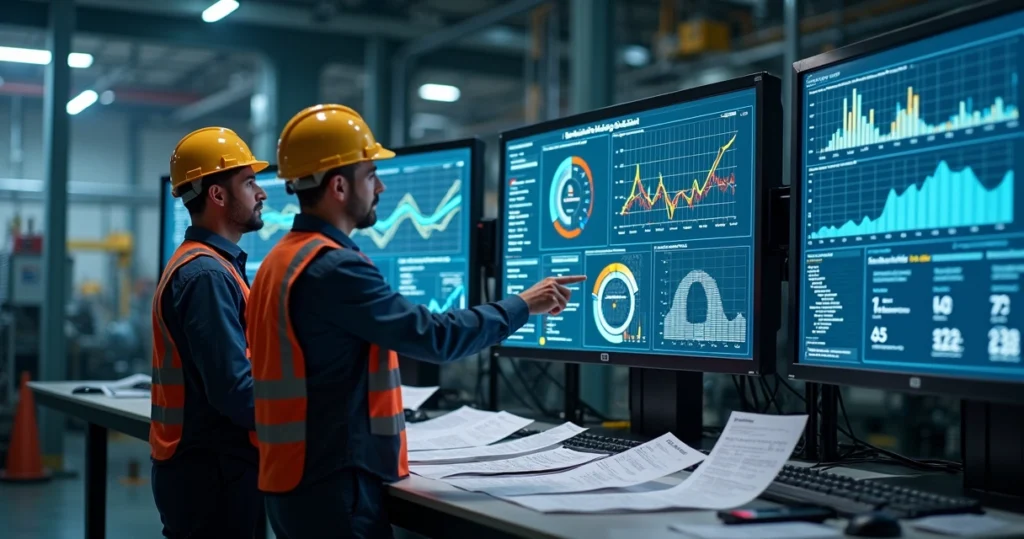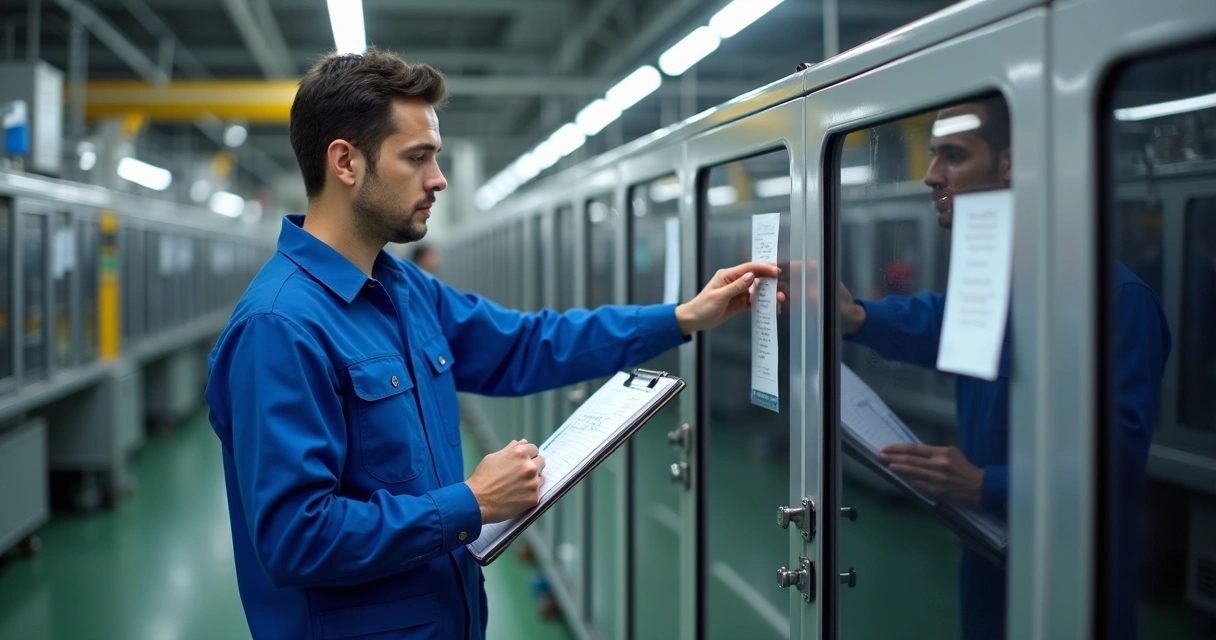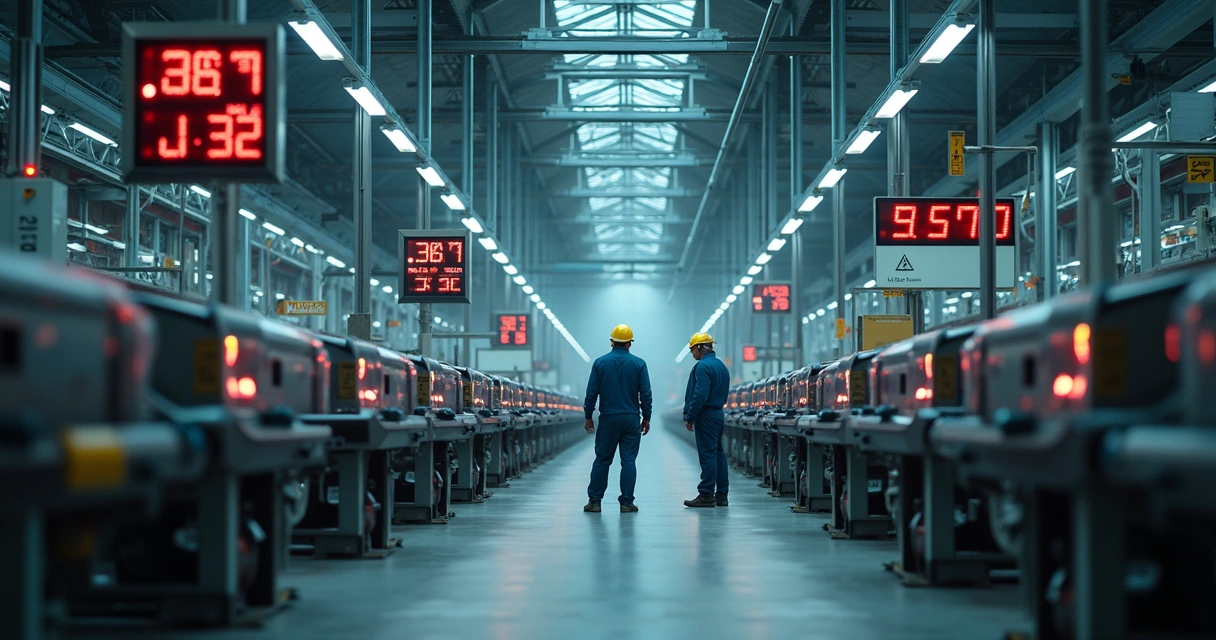Predictive Maintenance Platforms vs. Traditional Methods: 2025 Guide

Change is never a straight road, especially in industrial maintenance. For decades, many factories, plants, and processing sites relied on the playbook of scheduled, routine checkups and part swaps. Flip the calendar, shut things down for a look. It worked—kind of.
But now, predictive maintenance is taking front stage. Technology, especially platforms powered by artificial intelligence like Prelix, is changing the rhythm. Managers are rethinking what “maintenance” really means, and what it costs, both in labor and in lost production.
Why maintenance matters so much
The healthiest factories run when no one notices the machines at all. They hum, they don’t scream for attention. Yet when something does go wrong, it can be catastrophic—financially, logistically, even for safety.
As reported by Siemens in 2024, the world’s 500 largest companies bleed up to $1.4 trillion yearly on unplanned downtime. That’s not a typo. It’s about 11% of their total revenue, lost to surprises no manager wants.
The big question: Will predictive maintenance platforms achieve what scheduled maintenance never could? Or is this just hype? Let’s take an honest look at the differences, stories from the factory floor, and where reality sometimes falls short of promises.
What traditional maintenance looks like
Old-school maintenance routines felt logical for years. You created checklists—sometimes paper, now probably in a spreadsheet or CMMS tool. Replace belts every 6 months. Clean bearings every month. The calendar ruled.
- Calendar-based inspections and part replacements
- Visual checks, sometimes by people who barely knew the equipment
- Emergency repairs when breakdowns ignored the schedule
At times, this meant replacing good parts too soon. Or missing problems hiding in plain sight. The strategy’s biggest flaw? It treats every asset the same, even if every machine actually behaves differently.

Teams learned to live with a lot of uncertainty. Sometimes, replacements were silly—good bearings tossed out. Other times, disasters happened on a quiet night shift when no one was looking.
How predictive maintenance platforms change the game
Enter predictive maintenance platforms. These tools don’t just follow a set schedule. Instead, they gather data from sensors. They analyze vibration, temperature, pressure, and sometimes even the sound of a motor.
The real change? They predict when something will need attention, rather than just waiting for the next slot on a maintenance calendar. For instance, Prelix uses artificial intelligence to find root causes, not just symptoms, turning failure incidents into actionable reports and instant root cause diagrams.
- Live monitoring of equipment 24/7
- AI-based diagnostics tied to real-world usage, not just dates
- Alerts and suggestions before the failure
- Automatic reporting, so human error in tracking gets reduced
Predict before you react—don’t just hope you’ll catch it in time.
It’s a completely different mindset. Less repetition, more focus. That sounds simple, but in practice, it’s a major shift for most maintenance teams.
Failure detection: waiting for alarms vs. seeing patterns early
Traditional methods often depend on people’s senses. Feel for excess heat, listen for rattling. Scheduled checks sometimes got skipped during busy weeks. Even when done on time, real failures could sneak by undetected.
Predictive platforms, such as the one Prelix offers, use data from countless points. Machine learning “learns” patterns of normal wear versus early stages of failure. A slight deviation in vibration could mean a bearing is starting to fail months before it seizes. Scheduled maintenance can’t catch that.
- Traditional: See a problem when it’s obvious—sometimes too late
- Predictive: Spot subtle changes, months or weeks in advance
That’s not to say predictive tools are perfect. Sometimes they issue false alarms, or the team doubts the data. Trust needs building. But when a platform catches something early—before a major breakdown—it changes how everyone thinks about risk.
What the costs really look like
Cost debates are always noisy. Traditional maintenance appears cheap upfront. You only pay for a scheduler, a spreadsheet, or perhaps an in-house CMMS. Labor is fairly predictable—just hours spent swapping parts or doing checks.
But is it really cheap, considering the hidden costs of failures? The Siemens numbers make it hard to ignore: Unplanned downtime devours profits silently, often at night, sometimes only seen when the year’s closing numbers come in.
Predictive maintenance platforms feel expensive at first sight. There’s the initial installation, sensor hardware, maybe training, and platform licenses. But then, studies like these show 10X ROI, with savings in both maintenance costs (down by 25-30%) and unplanned downtime, which drops 35-45%. That’s no small difference.
- Organizations have found maintenance costs fall by 20-30% thanks to predictive strategies, as highlighted by independent research.
- Predictive maintenance can stretch equipment lifespan by 20-40% by fixing issues early, as outlined in industry case studies.
You sometimes wonder if the trade-off is fair. Is the investment in technology just shifting money from one line of the budget to another? In big organizations, though, the math usually says yes—predictive wins in the end.
The workload distribution conundrum
Traditional approaches often create a wave: during scheduled outages, everyone hustles. Then there’s a lull. Teams feel bored or unneeded. If something goes wrong between checks, panic spikes again. It’s uneven, exhausting, and leads to both overtime and downtime.
When predictive platforms are in charge, schedules become more organic. The software may tell you “replace pump X next week” or “keep an eye on dryer Y for rising temperature.” Maintenance becomes less about being busy for the sake of it, and more about being smart with effort.
- Fewer firefighting emergencies
- More targeted repairs—right when needed
- Less fatigue from endless routines
Work smarter, not just harder.
Maybe, there’s still some hesitation. Shifting habits isn’t easy. But teams quickly see the appeal when the calendar isn’t the enemy anymore.
Getting real: practical scenarios from factory floors
When routine rules break things
Picture a packaging plant. Their preventive plan swaps conveyor belts every six months. Last year, they shut down Line 3, swapped belts as scheduled, and lost a full shift of production. One belt looked pristine. It was only four weeks old—replaced by accident the last time.
No one could say why. Data wasn’t tracked. The loss of that shift? It cost the company $40,000. That doesn’t even count the impact on orders or overtime.
When data makes a difference

Now, take a bottling plant using predictive software. Sensors alert the team to a subtle vibration in a key pump. The platform’s AI matches it to early signs of shaft misalignment. They schedule a short stop for adjustment. That single action avoids a breakdown that would have cost a whole day’s production—and saved on spare parts too.
That’s day and night compared to the old method.
Impact on unplanned downtime—by the numbers
A study found one food processing facility had an average of 25 hours of unplanned downtime monthly—a staggering $129 million loss per year. When predictive maintenance halved their downtime, the savings were obvious. And let’s be honest, sometimes those stories make even the most skeptical manager reconsider.
Reliability data: the real story
Traditional records are patchy. Even with digital tools, old data can be vague: “Pump replaced—unknown reason.” Or “noise heard, no action taken.” It’s tough to learn from this kind of record keeping.
Predictive platforms excel in this space. They automatically store diagnostics, maintenance history, failure patterns, and results. Reports are consistent and detailed—no more guessing what happened last year or who did what. The Prelix platform, for instance, doesn’t just find causes; it creates clear diagrams and multi-layered root cause analysis (RCA) reports at the click of a button. Teams finally get the clarity they need.
Productivity and planned vs. unplanned downtime
 Traditional approaches do keep some things moving—if you only consider planned downtime. But unplanned downtime is the real thief. Machines break on weekends, at night, right before big shipments. No one plans for that mess.
Traditional approaches do keep some things moving—if you only consider planned downtime. But unplanned downtime is the real thief. Machines break on weekends, at night, right before big shipments. No one plans for that mess.
Predictive maintenance can reduce unplanned downtime by up to 50% according to modern research. That means more output from the same assets, fewer delays, and a steadier work pace. That’s the kind of difference that matters not just for profits, but for worker satisfaction too.
How integration fits into industrial workflows
A big concern is always: “Will it work with our existing systems?” Predictive maintenance tools often plug directly into popular MES, SCADA, and ERP systems, providing aligned scheduling and reporting. If you have something custom, there might be hiccups. But systems like Prelix thrive on creating a smooth transition—connecting to existing workflows, minimizing friction.
This means your team avoids “one more tool” syndrome. Instead, alerts, reports, and planning all come together in the same environment they already know.
- Automatic data collection—no more scrambling for last week’s logs
- Integration with purchasing and inventory so spares are ready
- Compliance made easy with ready-to-submit reporting
If you’re curious about what modern root cause analysis integrated with AI looks like, a great resource is this practical guide for industrial teams and the full AI-based RCA guide.
Team thinking: skepticism and culture shift
No matter how advanced, no platform works unless the team buys in. Some technicians take pride in “listening to the machine.” Others may think, “This is just another management fad.” There’s room for friction, at least at first.
The best rollouts include training, honest discussion of risks, and a lot of patience. Show early wins—when the platform catches a bearing failure before it locks up. Those moments build trust. And it’s important to remember, even with predictive tools, human expertise matters. People—not algorithms—make the final call.

Evaluating when to move: decision factors for managers
So, how do you know if a predictive maintenance platform is right for your plant? Or, when is it better to stick with scheduled plans? Every site is unique, but these questions can help:
- How much does unplanned downtime really cost per year—and is it rising?
- Are you replacing parts too soon, or dealing with frequent breakdowns?
- Does your maintenance crew feel overwhelmed by routine checks but still get hit with surprises?
- Can you easily learn from past failures and act on those lessons, or are records too scattered?
- Are you feeling external pressure to meet compliance or reporting targets faster?
- Is your existing workflow ready for a tech platform to slot into place?
- What is your team’s attitude? Are they hungry for better results, or worried about learning more systems?
If these questions reveal pain points, a test pilot with a predictive platform could be revealing. Adoption doesn’t have to be all-or-nothing. Many factories start on one line or one asset type—then expand as trust grows.
In many cases, reading experiences and strategies on maintenance and artificial intelligence can be helpful. The Prelix company blog has deep dives and practical resources both in English and Portuguese, for example: Prelix Maintenance AI Blog and Prelix Blog em Português.
Some lessons learned—and a quiet contradiction
I’ve seen managers swear by routines, only to pivot when predictive tools caught something they missed. Others, with all the tech installed, linger on the old ways, double-checking every alert manually.
The reality: No method is flawless. Predictive platforms can misread signals if data is bad. Traditional schedules can lull a team into a false sense of safety. Sometimes the best results come from a blend—a little calendar, a lot of data, all checked by experienced eyes.
Technology adds value, but people make the final difference.
Conclusion
The future of industrial maintenance is not just about replacing old routines. It’s about turning every failure into a learning moment—and reducing how often those failures even happen. Predictive maintenance platforms like Prelix, integrating real-time monitoring, artificial intelligence, and automatic reporting, are setting a new standard. They offer earlier warnings, fewer emergency stops, and much stronger data for future decisions.
Of course, the leap isn’t always easy. Traditional methods have their comfort, their routines, their defenders. But the numbers and stories from real production lines make the case: unplanned downtime is a silent killer, and scheduled checks alone just don’t cut it anymore.
If you’re ready to rethink your maintenance—for better bottom lines, safer teams, and fewer headaches—connect with Prelix today. Discover how fast your maintenance operations can shift from reactive to truly proactive, and see just how much you stand to gain.
Frequently asked questions
What is predictive maintenance in simple terms?
Predictive maintenance is a way to monitor machines and equipment using sensors and data analysis, so you can tell when something is starting to go wrong—before it breaks. It doesn’t rely on guessing or just following a calendar. Instead, it “listens” to the machine and warns you if there’s a problem coming up. You act only when the data shows a real need.
How does predictive maintenance differ from traditional?
In traditional maintenance, you set a schedule: replace parts every so often, inspect equipment at set times, and hope you catch anything wrong before it fails. Predictive maintenance uses technology to watch the actual condition of machines in real time. It alerts you to problems as soon as early signs appear, which means you don’t waste time or money on unnecessary replacements, and you catch more issues before they lead to costly downtime.
Is predictive maintenance worth the investment?
Most studies say yes, especially for companies where downtime is very expensive. Research highlights that predictive maintenance can cut unplanned downtime by up to 50%, reduce maintenance costs by 20-30%, and extend equipment life up to 40%. The returns add up quickly, particularly when expensive machinery or complex production lines are involved. While the upfront cost is higher, the savings and less stress often pay off fast. Still, every plant is a bit different, so it’s wise to run the numbers for your own operation before making the switch.
What are the best predictive maintenance platforms?
There are many options, and the “best” really depends on your plant’s needs and which features matter most to you. Prelix is an example of a platform focused on industrial teams who need instant diagnosis, clear reporting, and easy integration with existing systems. Prelix stands out for its deep root cause analysis, automated compliance reporting, and friendly interface. To find the right fit, look for platforms that align with your workflow, scale to your operation size, and have strong support for onboarding and ongoing use. If you want a good overview of how AI-powered root cause analysis can help, this Portuguese RCA guide for teams is a smart read.
How much does predictive maintenance cost?
Costs will vary depending on factory size, number of assets, existing equipment, and chosen platform. There is usually an upfront cost for hardware (sensors, gateways), software licenses, and sometimes training. After that, there’s a recurring fee, often per asset or per month. While some solutions can feel pricey to start, the savings from reduced downtime and lower repair bills often offset that quickly. Many plants see full ROI within the first year or two, especially when factoring in less overtime, fewer emergency repairs, and longer equipment life.
